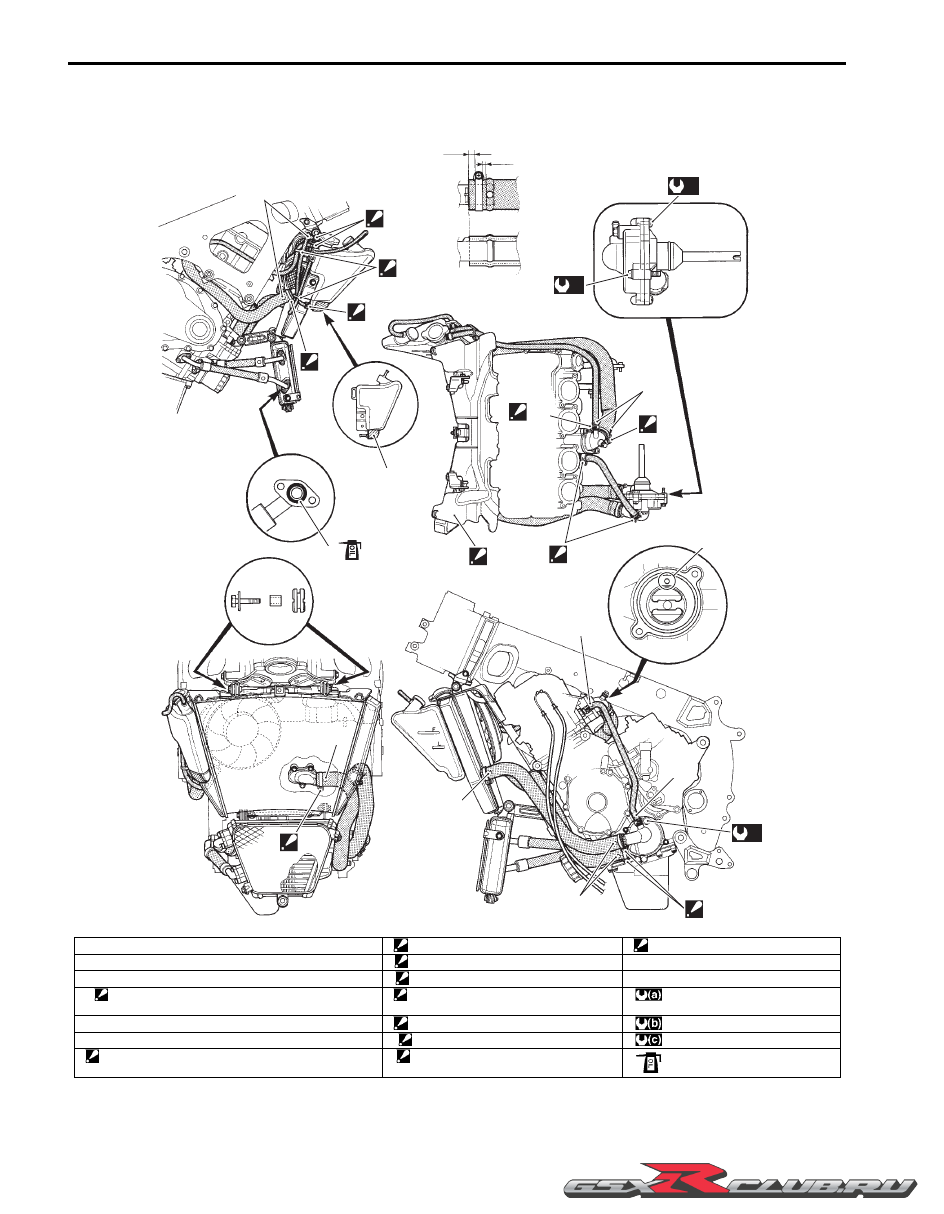Suzuki GSX-R1000. Service Manual - part 22

1F-3 Engine Cooling System:
Water Hose Routing Diagram
B947H11602002
“I”
“C”
“F”
“H”
“A”
“A”
“A”
“B”
“B”
“G”
“ a ”
“ b ”
(a)
(b)
“B”
1
(c)
“K”
“A”
“J”
“D”
2
3
4
“E”
I947H1160053-03
1. Thermostat air bleeder hole
“D”: Clamp end should face right side.
“K”: Screw head should face left side.
2. Cushion
“E”: Cut off the excess tip of the clamp.
“a”: 2 – 8 mm (0.08 – 0.31 in)
3. O-ring
“F”: Screw head should face right side.
“b”: Clearance
4. Radiator heat guard
: Be careful not to damage the pawls when removing.
“G”: Screw head should face backward.
: 6 N
⋅
m (0.6 kgf-m, 4.5 lbf-ft)
“A”: Yellow marking
“H”: Clamp end should face upward.
: 10 N
⋅
m (1.0 kgf-m, 0.7 lbf-ft)
“B”: White marking
“I”: Clamp end should face left side.
: 13 N
⋅
m (1.3 kgf-m, 9.5 lbf-ft)
“C”: Clamp end should face downward.
“J”: Screw head should face forward.
: :Apply engine oil.